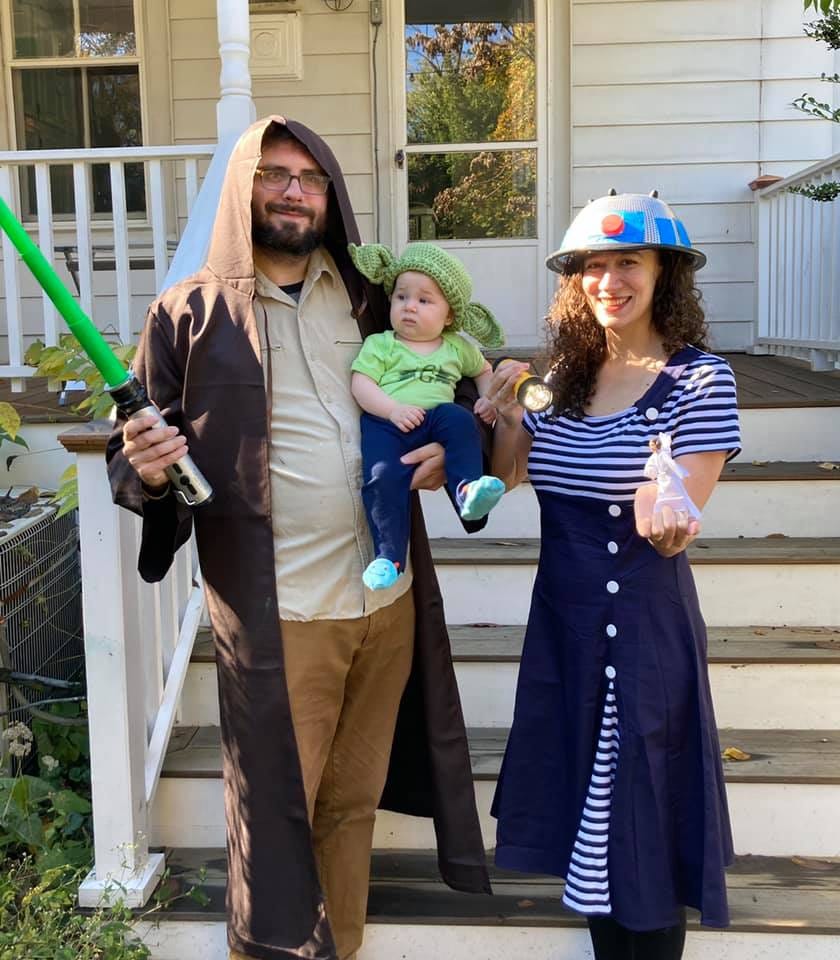Our December Read: Star Wars' Ghosts
Vox's Alissa Wilkinson joins us to discuss why Star Wars won't let the past die
When I was very little, I remember seeing the original Star Wars trilogy when they were re-shown in theaters. I was sick for one of them, and wanted to stay home, but we went anyway, since my mom said I shouldn’t see lightspeed on a tiny television—it was meant to be seen at the movie theater.
This winter, there is no Star Wars—at least not at the movies. (My baby laughs at the sound of blaster fire as we watch The Mandalorian). But we’ll close out the Tiny Book Club year with a Star Wars reading, one from my husband, Alexi Sargeant.

In The New Atlantis, Alexi wrote an appreciation of actor Peter Cushing (Grand Moff Tarkin) and a rejection of his digital resurrection in Rogue One. Using CGI and a body double, the film produced a simulacrum of Cushing in order to reprise his role. The result, per Alexi in “The Undeath of Cinema” breaks a compact between audience and actor.
Star Wars, as a phenomenon, relies on an alchemical mixture of technical and narrative creativity and the charisma of its actors: Darth Vader’s mask staring down Alec Guinness’s weathered face; clever miniatures to make the Millennium Falcon fly, the chemistry between Carrie Fisher and Harrison Ford to make us care; Frank Oz puppeting the wise Yoda while Mark Hamill gamely plays the impetuous pupil […]
An acting teacher of mine passed on what she claimed was an old saying, advising actors to be “the real frog in the artificial garden.” This means that the sets and costumes and given circumstances of a fictive world, be they ever so fanciful or abstract, are simply reality for one’s character. One should react as a real person would to these surroundings, telling the truth under imagined circumstances. This is not just a bargain the actor makes with the audience in exchange for the audience’s suspension of disbelief. The actor’s realness helps the audience to suspend disbelief, modeling what it is like to live in the reality of the story.
How will it affect audiences to know that the actor himself, the human face and body we identify with, is a piece of cinematic illusion? Reality, usually that of the actor, is our bridge into the fiction, fantasy, or surreality of the work. There is nothing any longer to hook us in when all we can see in the artificial garden is the artificial frog.
Acting, again, is the art of presence. The first taboo that Rogue One’s use of at-will resurrection violated was an artistic one. We don’t want actors who are the puppets of directors, each facial tic reflecting a director’s decree rather than a performer inhabiting his character’s reality. But that’s precisely what we get when we Frankenstein together an uncannily lifelike facsimile of an actor and give technicians the puppet strings.
This is my favorite piece to date that my husband has written, and it’s a pleasure to share it with you this month. Particularly as I have such a wonderful guest to discuss it with:
Alissa Wilkinson is a staff critic at Vox and an associate professor at The King’s College in New York City. She’s also written for Rolling Stone, Vulture, RogerEbert.com, Eater, the Washington Post, and many others. She is working on a forthcoming book with Broadleaf Press about what 20th century women intellectuals and artists can teach us about feasting. Alissa co-hosts the podcast Young Adult Movie Ministry, a cheeky, freewheeling conversation about Christianity and the movies.
I’ve been getting previews of her forthcoming book from her own substack, “Commonplace Book,” which is the first newsletter to which I became a paid subscriber. Alissa combines a sharp, analytical mind with a real capacity for wonder.
I look forward to reading your comments and questions as I prepare my conversation with Alissa. And I’ll send out a round-up of highlights from your conversation during our month with Gracy later this week.
Ex libris,
Leah




